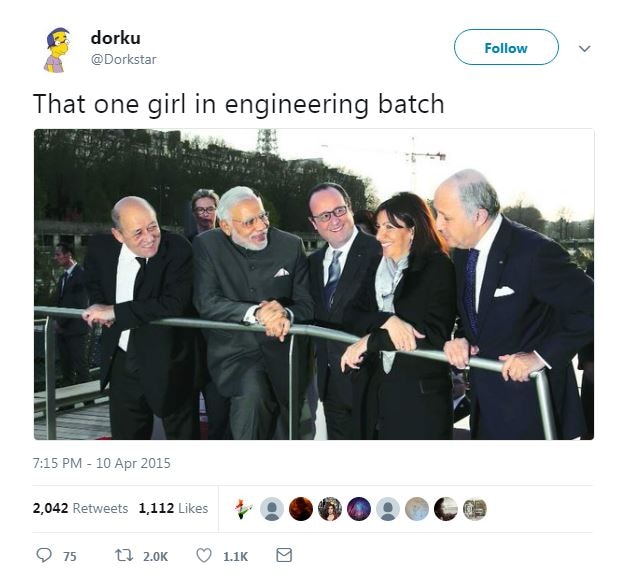Why there are fewer women in IITs

Few girls qualify IIT entrance, and fewer girls actually take admission.
There is a collection of jokes which only engineers, it seems, can understand and laugh at. Quite a few of them come across as plain sexist to outsiders as they make fun of the poor representation of women (particularly good-looking women) in engineering, mostly in the civil and mechanical engineering streams.

In 2018, IIT- Delhi has found a reason to cheer as it has already enrolled 16 per cent girls in all its courses — that's an all-time high number of female students.
The odious collection of those “engineering jokes” will not be revised, of course, as the joke is practically on all of us who have perceived education through a gender-tinted glass - and somehow deciphered that women won’t make good engineers.
Here are a few telling figures:
There are 23 IITs in India which admit 12,071 students: 10,219 boys — and 1,852 girls. The bias behind this seat allocation is strong, if not strange.
For the first time this year, the IITs introduced a supernumerary (over the original intake; not affecting existing seats) quota for female students, precisely so the skewed gender ratio at the premier institutions of the country can be addressed.
But this is not a permanent solution. The quota will be phased out gradually, when the desired ratio is achieved, the IITs hope. And also, many academics have already called out the quota as “regressive” since it questions the capability of girls who otherwise “outshine boys” in all Board exams, till Class 12.
What is a desired ratio and who is determining its benchmarks is certainly debatable, as the IITs aimed for 14 per cent female students this year, and 20 per cent by 2020. The number has been as low as eight per cent in the previous few years.

But there’s more than meets the eye here.
The supernumerary seats will ensure that the girls who have cracked the IIT entrance exam will have enough seats at nearby IITs; they won’t have to leave their hometowns to pursue engineering. That's been a drawback thus far.
But are there enough takers?
Only 6.7 per cent girls have qualified in the JEE Advanced in 2018. If we consider the top 500 rankers of the JEE (Advanced), there are only 14 girls there.
IIT-Delhi over-achieving its 14 per cent target of enrolling female students in 2018 is undoubtedly a positive move. But doesn’t this also indicate that other IITs will fall short of their targets as the number of girls who cracked the entrance exam is itself abysmally low?
To put it in simpler terms, the problem is: Few girls qualify for the IIT entrance, and fewer girls actually take admission in IITs.
And who is to be blamed for this situation in 2018?
A study by the sub-committee of the Joint Admission Board (JAB), which is in charge of IIT admissions, put the blame on societal biases.

According to the study, known as the Timothy Gonsalves Committee Report, girls do not have a level-playing ground as most parents are not willing to invest in a girl’s coaching for JEE; the gender ratio at the IIT-JEE institutes in Kota may testify to that.
Switch to medical — the scenario is altogether different.
The gender ratio in NEET (National Eligibility cum Entrance Tests), the medical entrance exam, is 50-50. A report points out that girls constitute 51 per cent of students joining medical colleges in the country.
So, how does societal bias explain this? Is medical study cheaper or easier than engineering?
Clearly, the problem is rooted far deeper and there have been several threads after threads of discussion on Quora about this issue. Some reports also indicate that JEE tests themselves might be “pre-disposed” to exclude girls. If that is the case, just adding more seats will not solve the problem. The engineering sector, starting from entrance tests to courses to jobs, will have to become more accommodative of intelligent women.
Justifications like "girls are more interested in biological sciences" (and apparently that’s why they opt for medical), "girls are poor at quantitative aptitude" or "girls have more options than boys" (!) do exactly what should not be done. They sidestep the elephant in the room which needs to be squarely addressed. Here, it is de-hyphenating education from gender and tackling social barriers that might culminate at the IITs but start at women's homes.
Adding seats is praiseworthy, yes. But we need more takers for those seats. Taking pride in tagging mechanical and civil engineering streams "boyzone" departments will not help gender inclusion. It will certainly not help engineering become more intelligent either.

